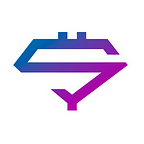Hedera Hashgraph: the Blockchain Killer or Another Overhyped Newcomer?
Disclaimer: crypto trading and investing is a risky activity related to potential losses. The following info can’t be considered as investment advice. Always do your own research before purchasing any tokens or contracts.
Long time no see in this section. But Superorder continues exploring blockchain 3.0 projects so today we’re going to talk about Hedera Hashgraph. Strictly speaking, this project isn’t blockchain at all. Instead, it utilizes another consensus protocol and architecture called Hashgraph while Hedera is an ecosystem. Recently, the team has launched its mainnet and suffered from a great token price dump. So, what’s the catch with it?
Hedera Hashgraph Basics
It’s interesting that the company’s representatives and other experts deliver pretty tangled information about Hedera. Probably, it’s the project’s policy. But most likely, people just don’t understand the project fully. We will try to clarify things.
Basically, Hedera Hashgraph is a decentralized network that proclaims itself as the third generation of distributed ledgers. The basement is similar to the IOTA’s Tangle but it relies on asynchronous Byzantine fault tolerance (aBFT) and a gossip protocol instead of central processors. For users, Hedera offers crypto, file, consensus, and smart contract services.
Hedera focuses on security and scalability sacrificing decentralization. Developers claim that the network can process 10,000 transactions or even more outperforming not only Bitcoin and Ethereum but Visa, as well. The network fee is planned to be extremely low — around $0.0001.
Sounds way too good? Let’s try to dive a bit more.
Hedera Hashgraph History and Key Events
The project was launched in 2018 with the whitepaper and the ideas of the Hashgraph algorithm presented only. It was invented by Leemon Baird, an expert in computer science. The company raised $124 million in several investment rounds by distributing SAFT contracts that can be used to purchase native HBAR tokens. Despite highly promising perspectives, experts were skeptical about the project because of poor realization.
As a response, in September 2019, Hedera officially launched its public mainnet. Today, developers can freely create dApps there, use existing services or participate in the network’s life. The mainnet supported 26 decentralized applications at the moment of launch. Moreover, it offers four services for participants:
- Cryptocurrency API: fast and low-fee payments around the globe.
- Smart Contract API: Solidity-based tools for next-gen applications.
- File Service API: transparent databases with secure storing.
- Consensus Service API: huge opportunities for decentralized features.
Nowadays, Hedera Hashgraph continues working on the mainnet by cooperating with developers. In the blog, they share news about the ecosystem and new upgrades. For example, the project launched the first Carbon stablecoin. Further, we expect to see more proofs of the network’s performance and demand.
Hedera Hashgraph Major Features
- Hashgraph architecture. The project offers a new kind of DAG. It’s based on the network of cross-validated nodes. To learn more about Hashgraph consensus, watch video tutorials from the team: one and two.
- Protocol based on gossip. Instead of a wasteful PoW algorithm, Hedera utilizes virtual voting. Instead of sending data, nodes exchange gossip about data and gossip about gossip. This helps to solve aBFT, boost speed, and reach 100% consensus.
- The Hedera Governing Council. Similarly to Libra, Hedera is controlled by up to 39 enterprises. The company declares the «one-company-one-vote» principle. The Council includes such names as Boeing, Deutsche Telekom, and IBM.
- Tokens with the 15-year schedule. The team plans to issue 50 billion of native HBAR tokens. They will be listed on 12 exchanges, at the beginning. Participants can use HBAR tokens to pay fees, use apps, and secure PoS protocols.
Hedera Hashgraph Advantages
- 100% consensus.
- High scalability.
- Low fees.
- More usage options.
Hedera Hashgraph Drawbacks
- Lack of decentralization.
- Queued transactions.
- Short history.
- Too large size of signatures.
Overall, the best description of Hedera-related FUD and issues is given in Eric Wall’s article.
Hedera Hashgraph Price, Trading & Investing Tips
Just after the launch in September, HBAR tokens’ price was set at $0.36. Today, they are more than one figure down — at $0.032. According to developers and representatives, it’s typical for fresh projects. They say that Hedera Hashgraph tokens are looking for the appropriate price level and may feature high volatility. Additionally, the Council thinks about the redesign of SAFT distribution and measures for better adoption.
For traders, HBAR tokens are pretty useless now. It’s barely possible to guess the price movements because they are unpredictable. However, investors can add these coins to the portfolio and hope for the future growth of the project. We think that Hedera can become a successful private network but it will not exceed Ethereum or Bitcoin soon. The thing is that crypto users don’t like reduced decentralization, as a rule.
As usual, clap & share if you’re satisfied with this guide. We at Superorder appreciate your attention and want to deliver only top-quality content. See you!
